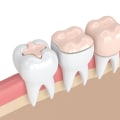Root canals and extractions are two of the most important dental treatments that affect our overall dental health. They both play a critical role in maintaining our oral health, but they are also two very different treatments. Root canals and extractions can be confusing to understand, which is why we've created this comprehensive overview to explain the differences between the two procedures. Root canals are a procedure that removes infected tissue from the root of a tooth, while an extraction is when a dentist removes the entire tooth. Both are vital for maintaining dental health, but they differ in their purpose and the process involved.
In this article, we'll discuss the differences between the two treatments and what you should expect if you need either of them. We'll also explore what you can do to prevent the need for root canals and extractions in the first place, as well as how to properly care for your teeth after either procedure. Read on to learn more about root canals and extractions!Root canals and extractions are two common dental treatments that can help protect your overall dental health. Root canals are used to treat infections within a tooth, while extractions remove a tooth from the socket. Both procedures are necessary in different circumstances, and have their own potential risks and post-treatment care. A root canal is used to treat an infection that has reached the pulp of the tooth.
This infection is caused by bacteria that have reached the nerve of the tooth, usually as a result of deep cavities, trauma, or cracks in the tooth. During the root canal procedure, the dentist will remove the infected pulp from the inside of the tooth, clean the area, and seal it. This will help to prevent any further infection from occurring. Root canals usually take one to two appointments and can last up to two hours.
The dentist may use local anesthesia to help reduce any discomfort during the procedure. An extraction is used to remove a tooth from its socket in the jawbone. This procedure is most often used when a tooth is too damaged to be saved with a root canal, or when there are too many teeth for the jawbone to support. During the extraction, the dentist will use special instruments to loosen and remove the tooth from its socket. Extractions typically take one appointment and can last up to an hour.
The dentist may use local anesthesia to help reduce any discomfort during the procedure. Both root canals and extractions have potential risks associated with them. For root canals, there is a risk of damage to surrounding tissue or nerve damage due to improper technique. For extractions, there is a risk of infection in the area where the tooth was removed, or damage to surrounding teeth or tissue due to improper technique. It is important to talk to your dentist about any potential risks before undergoing either procedure. It is also important to discuss any post-treatment care that may be necessary after either procedure.
For root canals, it is important to maintain good oral hygiene by brushing and flossing regularly and visiting your dentist for regular checkups. For extractions, it is important to keep the area clean and follow any instructions given by your dentist for caring for the area. Additionally, it is important to replace any teeth that have been extracted with a dental implant or bridge to help prevent further problems. In summary, root canals and extractions are two common dental treatments that are necessary for different reasons. It is important to discuss any potential risks with your dentist before undergoing either procedure, as well as any post-treatment care that may be necessary afterwards.
By understanding these procedures and following your dentist’s instructions, you can help protect your overall dental health.
What is an Extraction?
An extraction is a procedure in which a dentist removes a tooth from the mouth. Extractions are usually performed if a tooth is severely damaged, decayed, or infected. Extractions are also sometimes done to make room for orthodontic treatment or when a tooth is impacted (stuck in the gum and not able to break through).Extractions can be done using a local anesthetic, which numbs the area around the tooth, or with general anesthesia, which puts the patient to sleep. Depending on the situation, the dentist may choose to extract the entire tooth or just part of it.It's important to understand why extractions are necessary. In cases of severe decay or infection, an extraction may be necessary to prevent further damage or spread of infection. Additionally, extractions can also be used to make room for orthodontic treatment. With extractions, teeth can be moved into alignment and gaps between teeth can be closed.
In summary, extractions are necessary when a tooth is severely damaged, decayed, or infected. They can also be used to make room for orthodontic treatment.
What is a Root Canal?
A root canal is a dental procedure used to remove infected and damaged tissue from inside a tooth. This procedure is necessary when the pulp, which contains the nerve and blood supply of the tooth, becomes infected or damaged.The root canal procedure involves cleaning out the damaged tissue, filling the space with an inert material, and sealing it with a crown. This helps to prevent further damage to the tooth and keeps it from becoming infected. Root canals are usually performed to prevent further damage to the tooth, which can cause pain and infection. In some cases, a tooth that has been damaged by decay may need to be extracted rather than treated with a root canal. This decision is made based on the severity of the damage and whether or not the tooth can be saved.
Root canals
can help to protect your overall dental health by removing damaged and infected tissue and preventing further damage.They can also help to reduce pain and discomfort caused by an infected or damaged tooth. Root canals and extractions are two common dental treatments that can help protect your overall dental health. A root canal is a procedure that involves cleaning out the infected or damaged pulp in the center of a tooth and then filling it with a special material. An extraction is the complete removal of a tooth from its socket.
Both procedures can be necessary if a tooth is infected, decayed, or broken beyond repair. It is important to understand the risks and post-treatment care that may be needed for either treatment. With proper care and regular check-ups, you can maintain your dental health and avoid the need for root canals and extractions.






